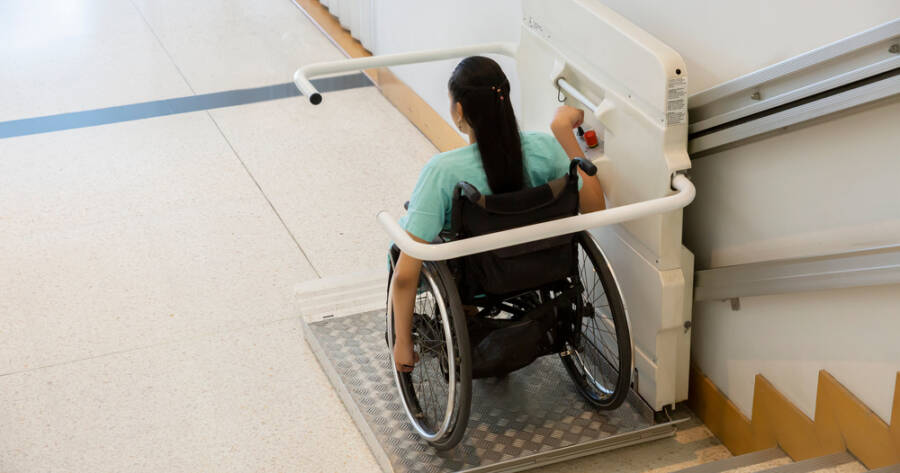For individuals with mobility challenges, navigating stairs can be a daily struggle. While stairlifts are a popular solution, they may not always be the best fit due to cost, practicality, or personal preference. Fortunately, there are several alternatives that can improve accessibility in your home and ensure safety and independence. Explore the 10 best alternatives to stairlifts for homes in Great Britain.
1. Home Elevators (Domestic Lifts)
Home elevators are becoming an increasingly popular option for multi-story homes. Although they require more space and a higher upfront cost, they offer a seamless and stylish solution for those needing long-term accessibility. Modern home elevators come in compact designs, making them suitable for smaller homes.
Pros:
- Ideal for those with severe mobility challenges
- Adds value to the property
- Smooth and quiet operation
Cons:
- Expensive installation
- Requires significant renovation
2. Through-Floor Lifts
A through-floor lift is a vertical lift that travels between floors by creating an opening in the ceiling and floor. These lifts are compact and designed for home use, offering a practical alternative to stairlifts for wheelchair users or individuals who prefer to remain seated.
Pros:
- Compact and space-efficient
- Ideal for wheelchair users
- Can be customized for aesthetics
Cons:
- Structural modifications required
3. Platform Lifts
Platform lifts are an excellent choice for homes with short flights of stairs or split-level living spaces. They can accommodate wheelchairs and mobility scooters, providing a versatile and easy-to-use solution for indoor or outdoor areas.
Pros:
- Suitable for wheelchairs and heavy loads
- Indoor and outdoor versions available
Cons:
- May require significant space
4. Inclined Platform Lifts
Similar to stairlifts but designed for wheelchairs, inclined platform lifts travel along the staircase railing and provide a stable platform for wheelchair users. These lifts can fold away when not in use, keeping the stairs accessible for others.
Pros:
- No need to transfer out of the wheelchair
- Compact and foldable design
Cons:
- Can be expensive
- Slower than stairlifts
5. Step Lifts
Step lifts are small, vertical lifts that work for short sets of steps, typically at a home’s entrance. They are ideal for wheelchair users who need to navigate outdoor steps without compromising the property’s appearance.
Pros:
- Simple installation
- Suitable for outdoor use
Cons:
- Limited height range
6. Ramps
For homes with just a few steps, ramps are a cost-effective and practical alternative. They can be made from various materials, such as aluminum, wood, or concrete, and are suitable for both temporary and permanent installations.
Pros:
- Affordable and easy to install
- Great for wheelchairs, walkers, and scooters
Cons:
- Not suitable for long staircases
- Requires space
7. Mobility Scooters with Climbing Capability
Some advanced mobility scooters can handle small inclines and steps, making them a suitable option for individuals who don’t want to modify their home. These scooters provide greater flexibility for both indoor and outdoor use.
Pros:
- No home modifications needed
- Portable and versatile
Cons:
- Limited stair-climbing capability
8. Portable Stair Climbers
Portable stair climbers are motorized devices that help individuals move up and down stairs without needing a permanent installation. They are particularly useful for temporary accessibility needs.
Pros:
- Portable and cost-effective
- No permanent modifications required
Cons:
- Requires an assistant for operation
9. Chair Lifts
A chair lift is a less permanent solution compared to a stairlift. It consists of a chair attached to a track that moves along the stairs. These are useful for temporary needs or rental properties.
Pros:
- Easier to install and remove
- Less expensive than stairlifts
Cons:
- Less durable for long-term use
10. Relocation or Living on One Floor
In some cases, the most practical solution is relocating to a single-story home or rearranging your current living space to avoid the need to navigate stairs. While this may seem drastic, it can provide a more comfortable and accessible living environment.
Pros:
- No need for mechanical solutions
- Long-term cost savings
Cons:
- Requires significant lifestyle changes
Finding the Right Accessibility Solution for Your Home
While stairlifts are a common solution for improving accessibility, they aren’t the only option. From home elevators and platform lifts to simple ramps and portable stair climbers, there are plenty of alternatives to suit different needs and budgets. Carefully assess your mobility requirements, budget, and home layout before choosing the best option. With the right solution, you can create a safe, accessible living environment that enhances your quality of life.

